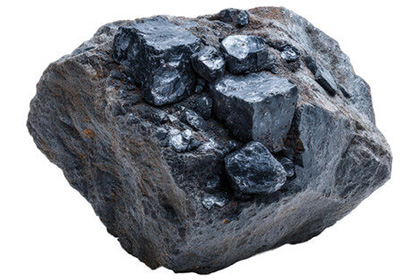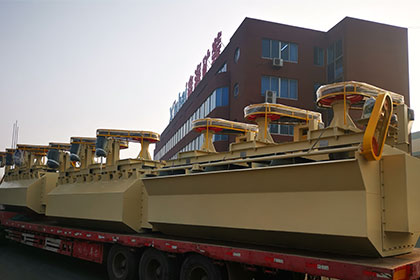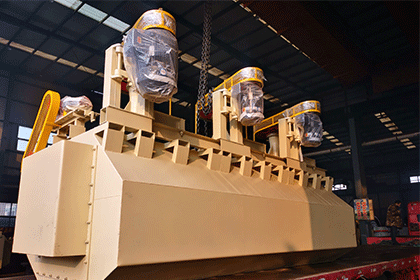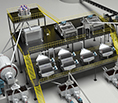Step-by-Step Process of Graphite Mining
 Laura
Laura
 Oct 30, 2025
Oct 30, 2025
 457
457
If you want to know more details about equipment, solutions, etc, please click the button below for free consultation, or leave your requirements!
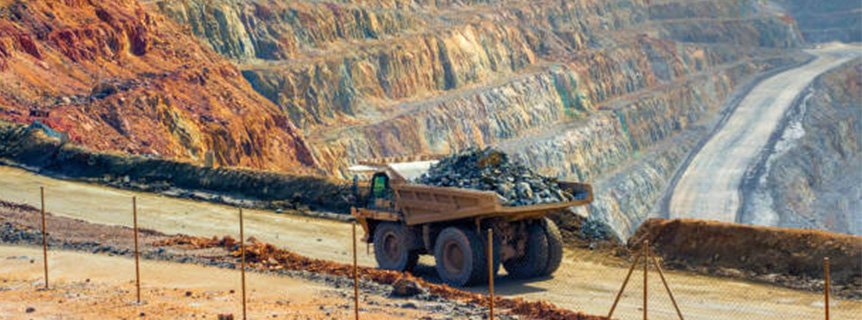
Graphite mine
Graphite is one of the most versatile and valuable minerals on Earth, with applications ranging from battery production and lubricants to refractory materials used in extreme heat environments. As the demand for electric vehicles (EVs) and energy storage solutions grows, graphite mining has become a critical part of the global supply chain. But how is graphite mined and processed? In this article, we’ll walk you through the entire graphite mining process, from extraction to final processing.
What Is Graphite?
Before diving into the mining process, it's essential to understand what graphite is. Graphite is a naturally occurring form of carbon that forms in three types:
Flake Graphite: Found in metamorphic rocks, commonly extracted through mining.
Vein Graphite: A rarer form that forms in fissures of rocks, often mined through underground methods.
Amorphous Graphite: A low-grade, powdered form of graphite found in veins and deposits.
Graphite is prized for its excellent conductivity, high melting point, and lubricating properties, making it a crucial component in industries such as electronics, steel, and battery manufacturing.
01Step 1: Exploration and Site Assessment
BackThe first stage in the graphite mining process is exploration. Geologists use a combination of geophysical surveys, aerial mapping, and core drilling to locate high-grade graphite deposits. After an initial assessment, exploration teams collect rock and soil samples to determine the size and quality of the deposit.
Core Drilling: Core samples are extracted from the earth to analyze the mineral composition and purity.
Geophysical Surveys: These surveys detect anomalies that may indicate the presence of graphite ore beneath the surface.
Sampling: The samples are tested in labs to determine the mineral content, grade, and the feasibility of extraction.
Once a promising site is identified, a detailed mining plan is developed, accounting for environmental factors, local regulations, and logistics.
02Step 2: Extraction Methods
BackGraphite can be mined using two primary methods: open-pit mining and underground mining. The extraction method depends largely on the depth and type of graphite deposit.
1. Open-Pit Mining
Open-pit mining is used when the graphite deposit is located close to the surface. This method involves the removal of layers of soil and rock (overburden) to expose the ore. The ore is then extracted and transported to processing facilities.
Advantages: Open-pit mining is cost-effective and can be completed quickly for shallow deposits.
Disadvantages: It can lead to significant landscape disturbance and has higher environmental impacts compared to underground mining.
2. Underground Mining
When the graphite deposit is deeper, underground mining is used. This method involves tunneling into the earth to reach the ore body. The extracted ore is transported to the surface through a system of shafts or declines.
Advantages: Less surface disturbance and more suitable for deep, high-grade deposits.
Disadvantages: More expensive due to the need for specialized equipment and higher safety measures.
03Step 3: Crushing and Grinding
BackOnce the graphite ore is extracted, it is transported to a processing plant, where it undergoes crushing and grinding. This step reduces the size of the ore and prepares it for further processing.
Crushing: The large chunks of ore are crushed using jaw crushers and other heavy equipment to break them down into smaller pieces.
Grinding: The crushed ore is then ground into finer particles, typically using ball mills or other grinding machines. The finer the particles, the easier it is to separate the graphite from other minerals during the beneficiation process.
04Step 4: Beneficiation: Concentrating Graphite
BackAfter crushing and grinding, the next step is beneficiation, which involves separating the valuable graphite from other minerals like quartz, mica, and feldspar. This is achieved through separation methods such as:
1. Froth Flotation
The most commonly used beneficiation technique for graphite is froth flotation, which uses water, chemicals, and air bubbles to separate graphite from the gangue (waste) material. During this process:
Chemicals are added to the slurry to make graphite hydrophobic (repels water).
Air bubbles are introduced to the mixture, causing the graphite particles to float to the surface, where they are collected as froth.
The unwanted minerals remain submerged and are removed.
2. Gravity Separation
Another method is gravity separation, where the ore is subjected to centrifugal forces or heavy liquid separation. Since graphite is denser than many of the surrounding minerals, gravity separation helps isolate it from lighter particles.
3. Magnetic Separation
If the ore contains magnetic minerals, magnetic separation can be used to remove those unwanted materials, improving the quality of the graphite concentrate.
05Step 5: Purification and Refining
BackAfter beneficiation, the concentrate still contains some impurities that must be removed before it can be used for high-quality applications like battery manufacturing. The purification process typically involves several steps:
1. Acid Leaching
Acid leaching involves treating the graphite concentrate with hydrochloric acid or other chemicals to remove impurities such as iron, aluminum, and other metallic contaminants.
2. Thermal Treatment
In some cases, the graphite concentrate is subjected to high-temperature treatment (also known as calcining) in a furnace. This process helps to eliminate volatile compounds and further purifies the graphite.
3. Electrochemical Purification
For applications requiring ultra-pure graphite (e.g., batteries and electronics), electrochemical methods may be used to further refine the material.
06Step 6: Shaping and Final Processing
BackOnce purified, the graphite is processed into different forms, depending on its intended use:
Graphite Powder: Ground into fine powder for lubricants, paints, and other industrial applications.
Graphite Blocks and Shapes: Processed into solid blocks, rods, or other custom shapes for use in high-temperature industries, such as steel and casting.
Battery-Grade Graphite: Refined into specific particle sizes and coated for use in lithium-ion batteries.
07Step 7: Packaging and Distribution
BackOnce processed, the final product is carefully packaged and shipped to customers. Depending on the market, graphite is shipped in bulk for industrial uses or refined into smaller quantities for specialized applications such as batteries and electronic components.
*Environmental Considerations in Graphite Mining*
Graphite mining can have significant environmental impacts, including water pollution, habitat destruction, and high energy consumption. To mitigate these impacts, modern mining companies focus on sustainable practices, including:
Water Recycling: Using water-efficient beneficiation methods to minimize water usage and pollution.
Waste Management: Properly managing the tailings and waste products from mining and processing operations.
Reclamation: Rehabilitating mining sites and restoring habitats once mining activities have ceased.
08Conclusion
BackGraphite mining and processing involve a series of complex steps, from exploration and extraction to purification and final product shaping. As the demand for electric vehicle batteries and energy storage solutions continues to rise, the importance of sustainable graphite mining will only increase. By understanding the complete mining and processing cycle, stakeholders can better appreciate the role of graphite in modern industries and the efforts being made to ensure its future availability.
This step-by-step guide highlights the major processes involved in graphite mining, and how the industry is adapting to meet the growing demand for this versatile material.
Feel free to contact us and learn more about graphite processing solutions!
 +86 183 3575 8886
+86 183 3575 8886 pinklaurabao@gmail.com
pinklaurabao@gmail.com



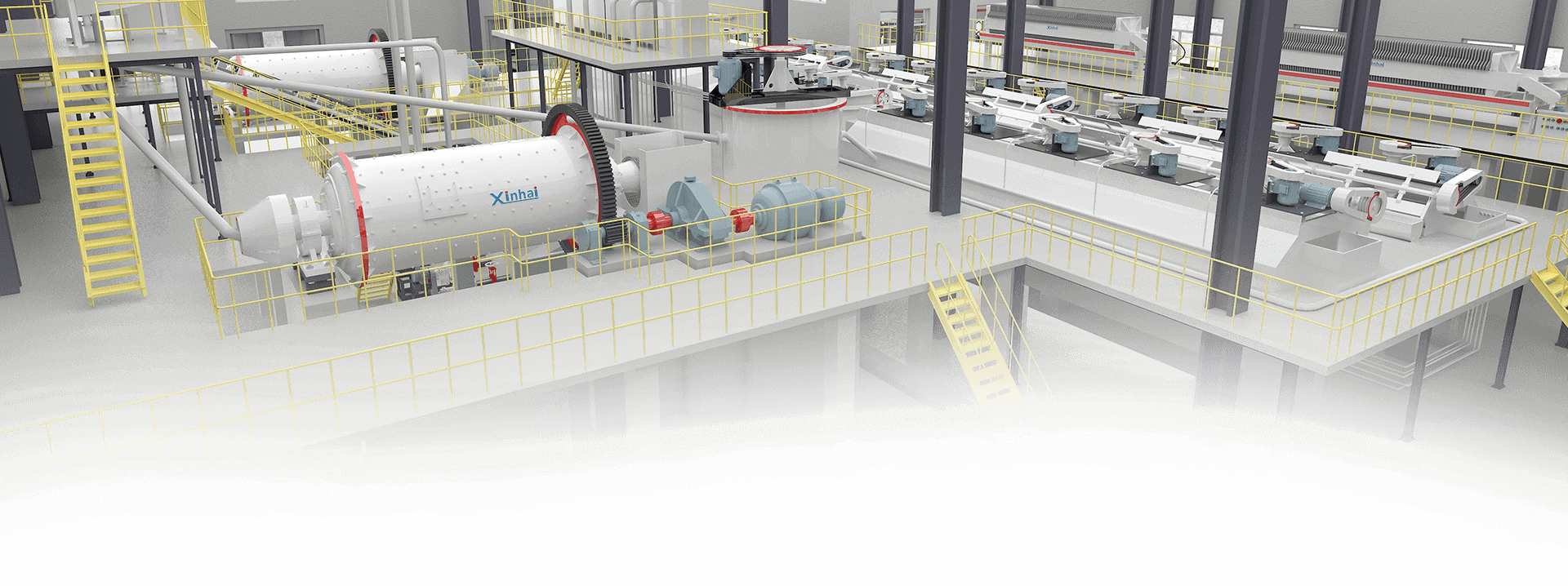
 Message
Message Chat Now
Chat Now


